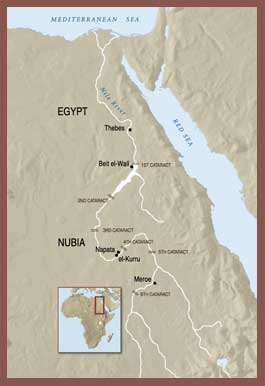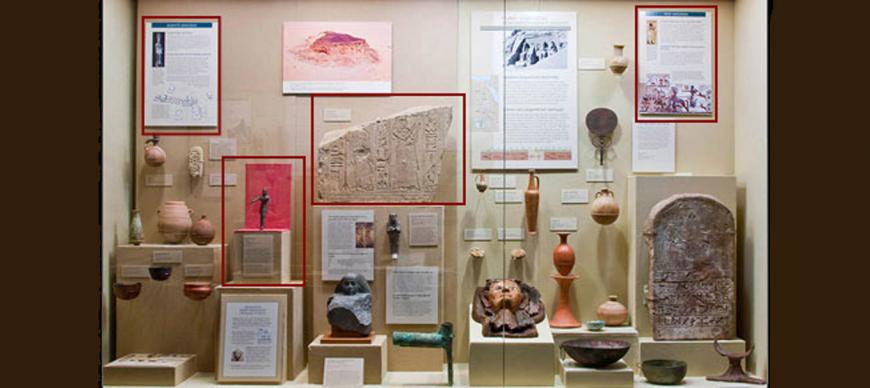After defeating the Nubians as far upstream as the 4th cataract, pharaohs of Egypt’s New Kingdom (1550–1069 BC) incorporated Nubia, which they called Kush, into their far-reaching empire to enhance trade and exploit Nubia’s mineral wealth. For 500 years Nubia was a colony of Egypt. Many Nubians adopted aspects of ancient Egyptian culture, and their artifacts look much like those found in Egypt. This is especially true in northern Nubia where the Oriental Institute’s Nubian collection was excavated.
 Nubians later conquered and ruled Egypt
Nubians later conquered and ruled Egypt
A powerful state developed in Nubia after the Egyptians withdrew at the end of the New Kingdom. This Kushite kingdom, as the state is commonly called, was based at Napata, near the 3rd cataract. Kushite kings conquered the land of the pharaohs and ruled for almost a century as Egypt’s 25th dynasty (747–656 BC). The Kushite kings sparked a strong revival of ancient Egyptian culture. They copied and preserved earlier Egyptian religious texts, created their own historical texts, built and decorated temples in Egyptian style, and adopted the pyramid for their royal burials at Napata. In both text and image they stressed their Kushite or


